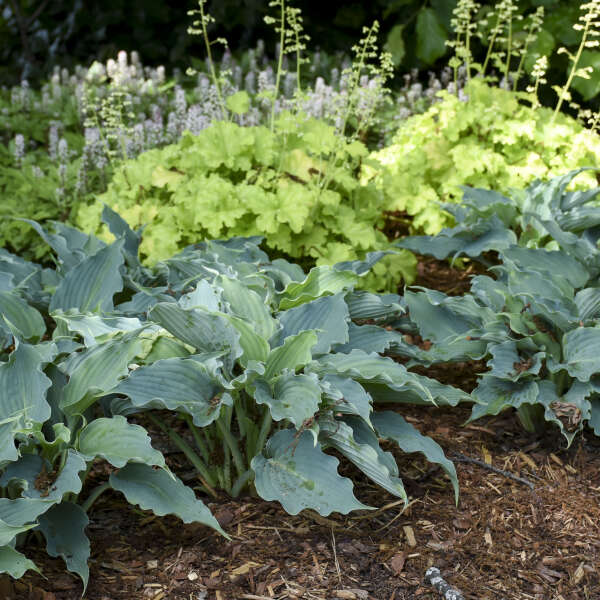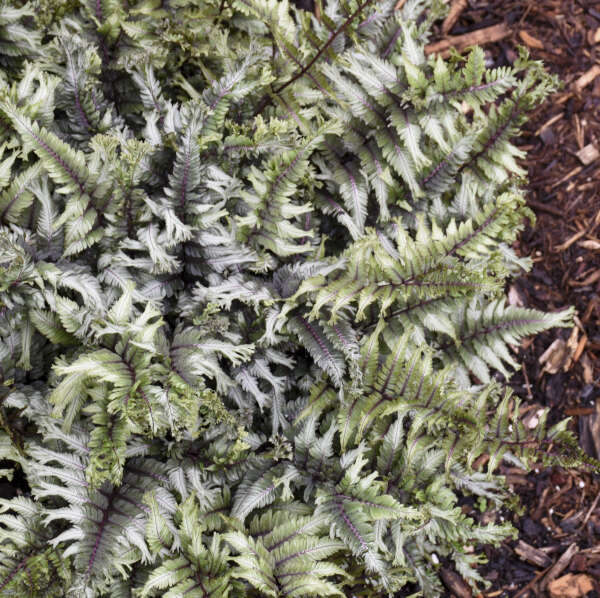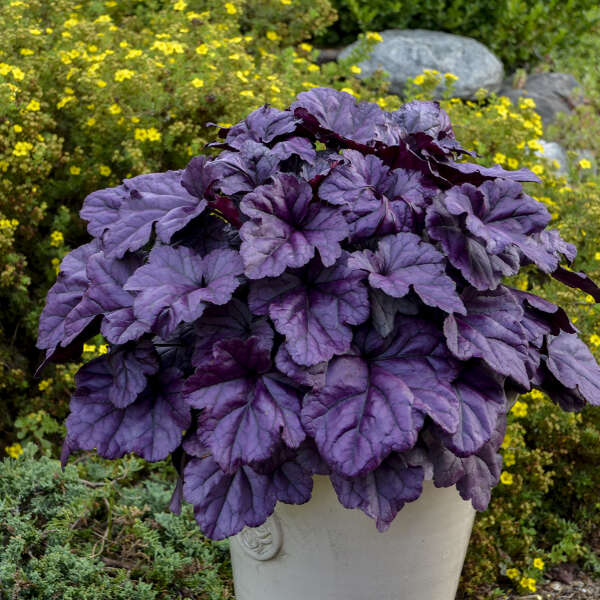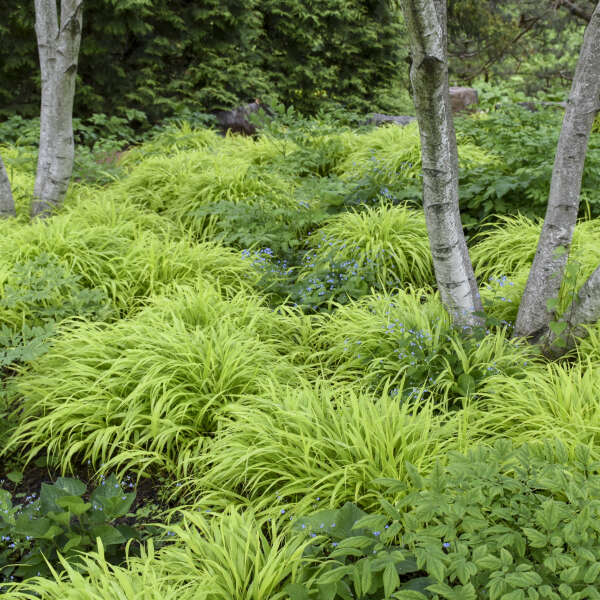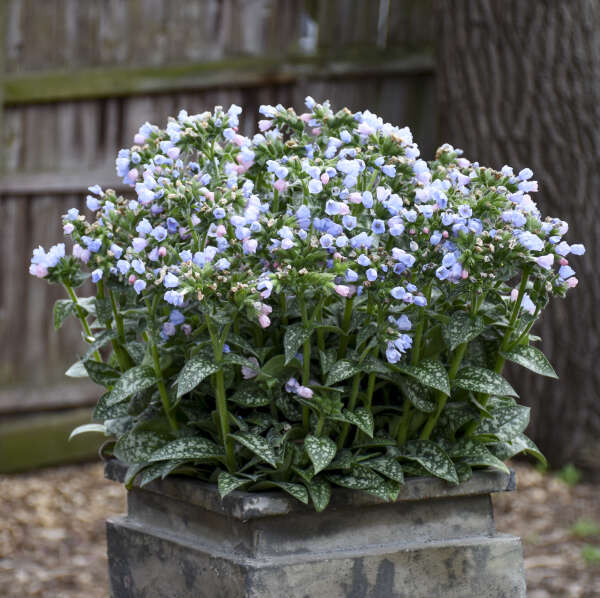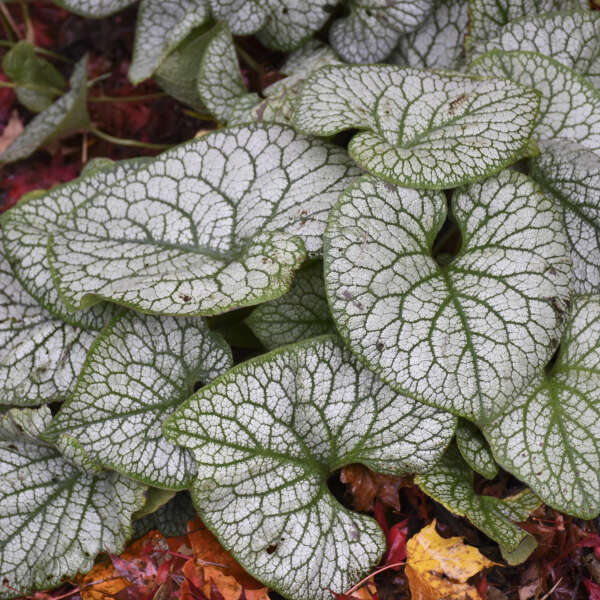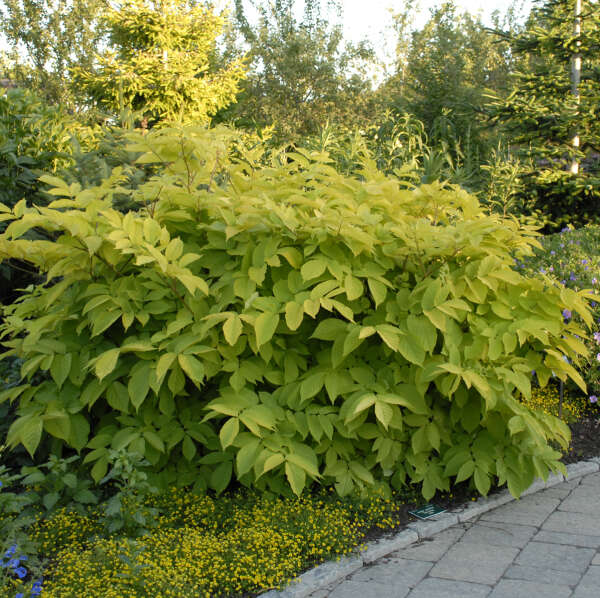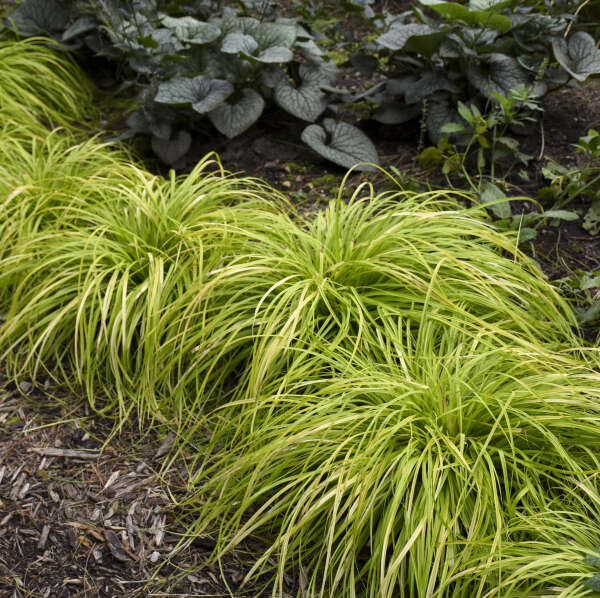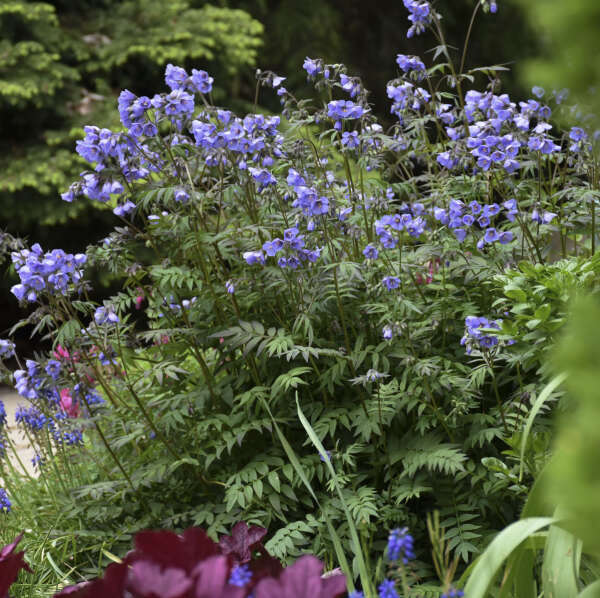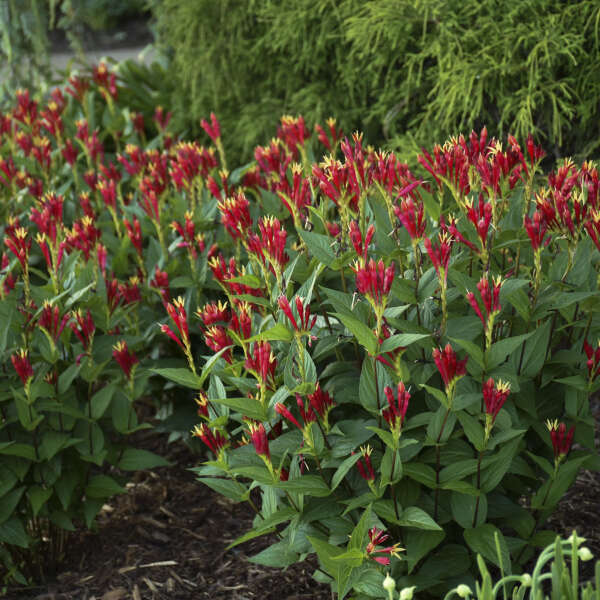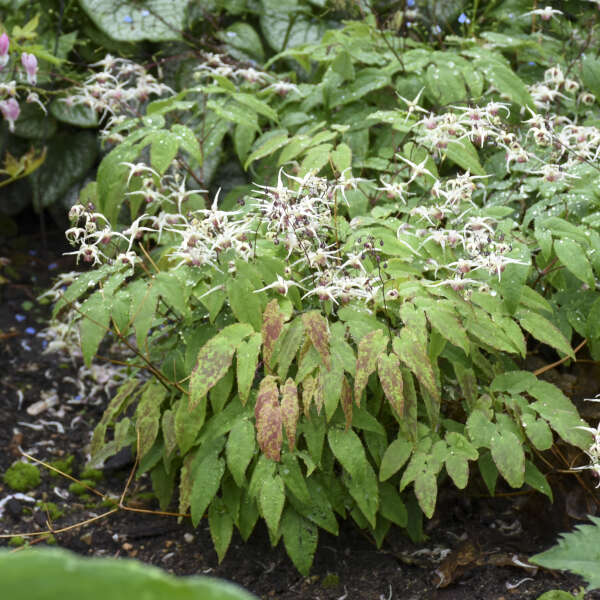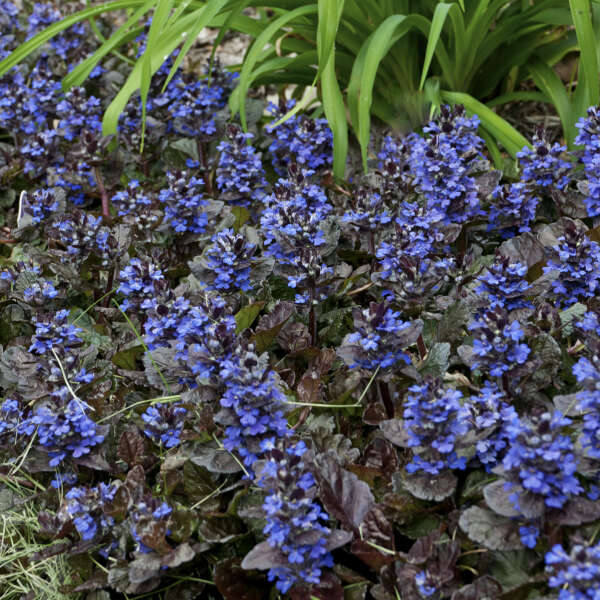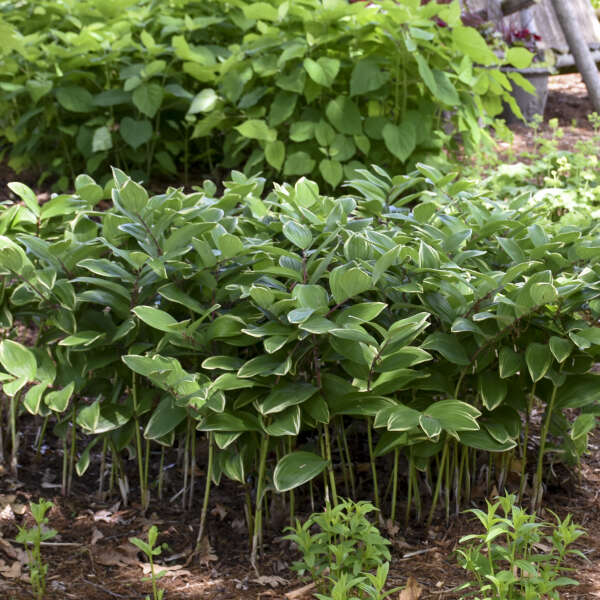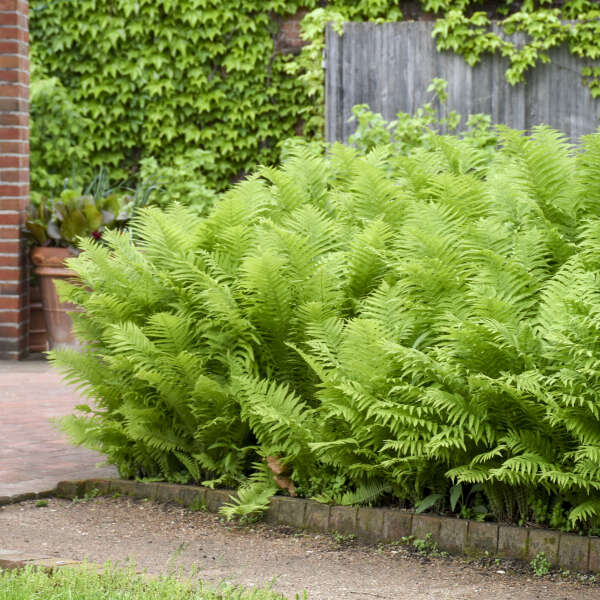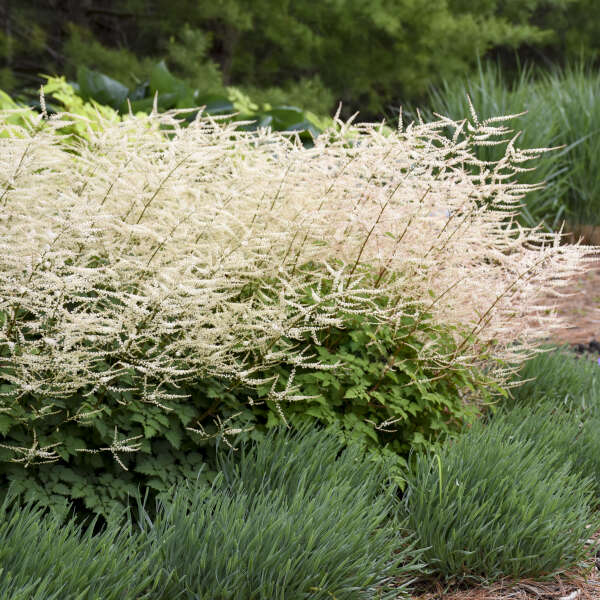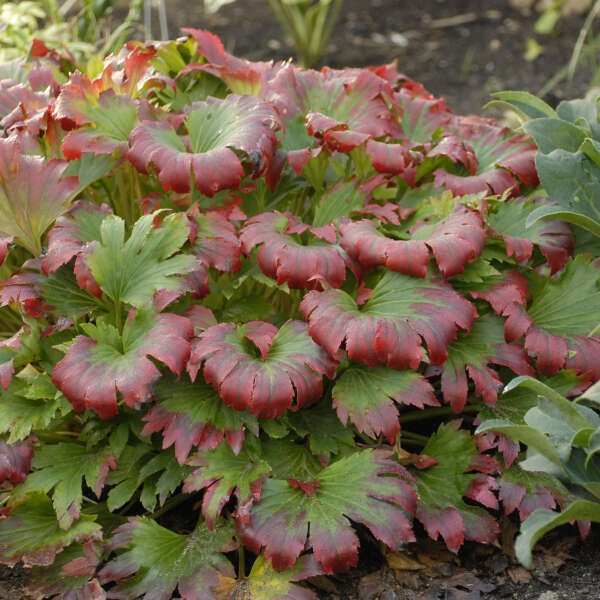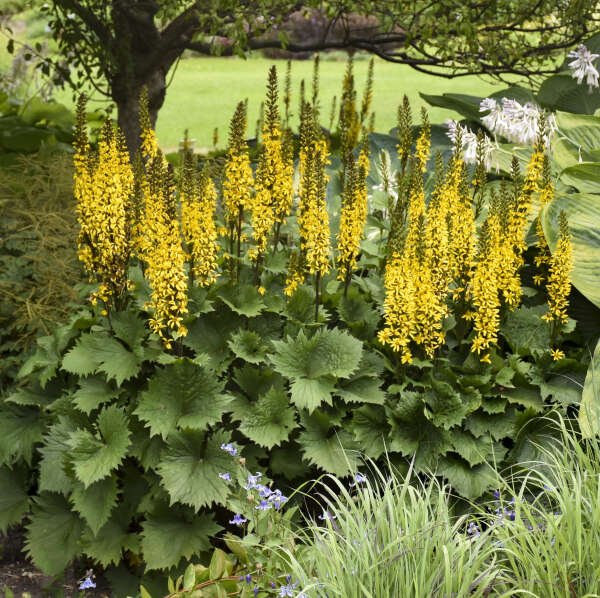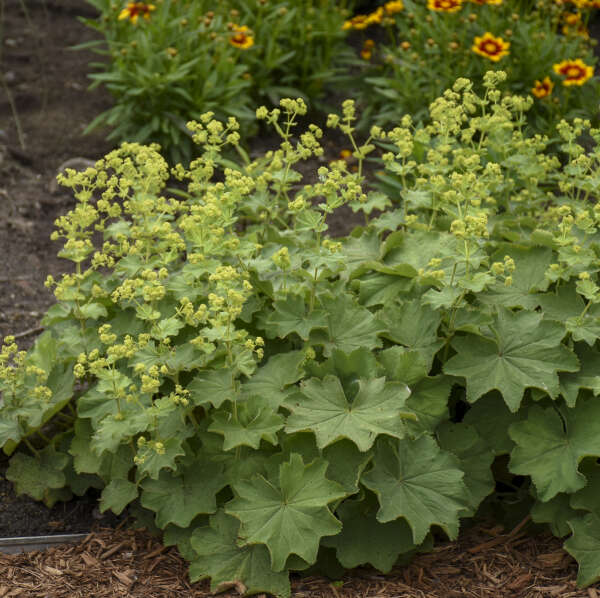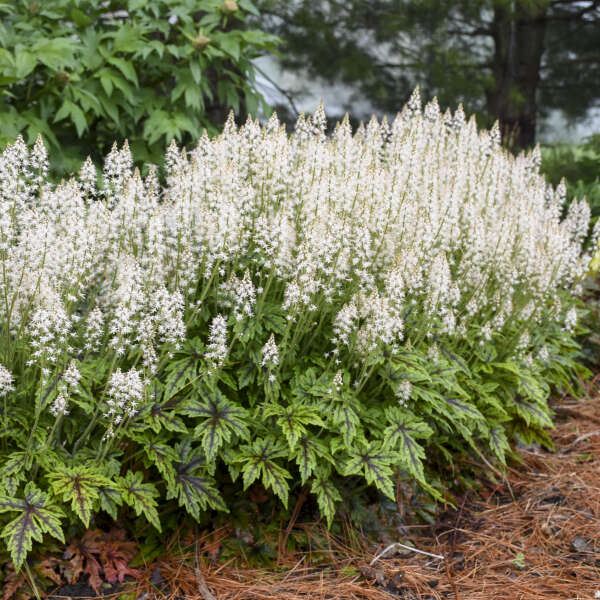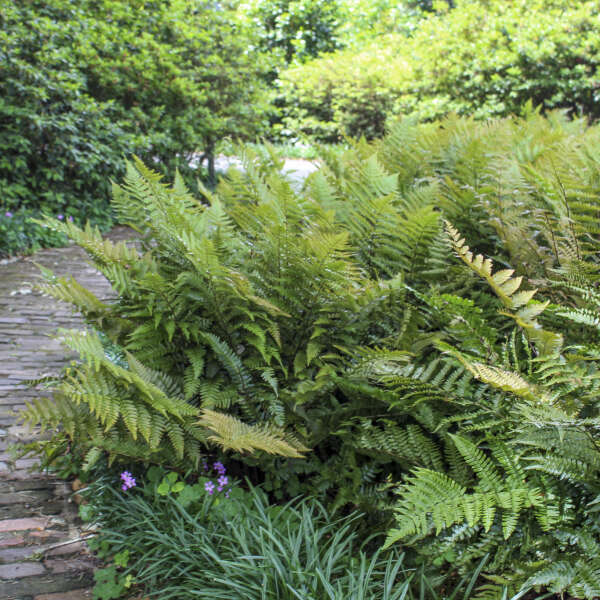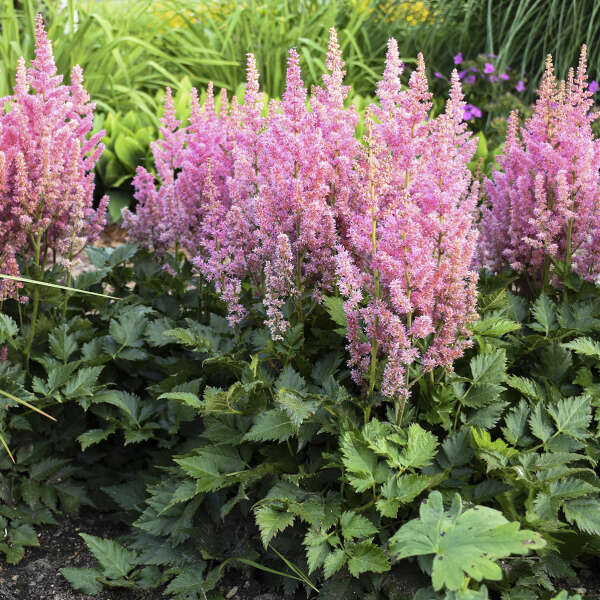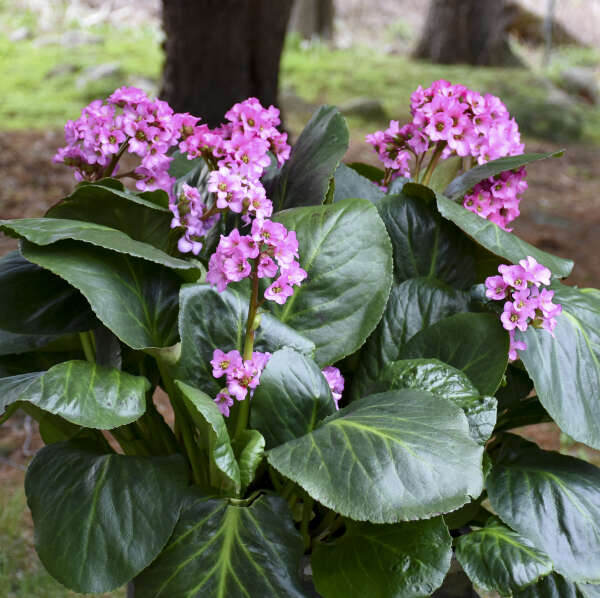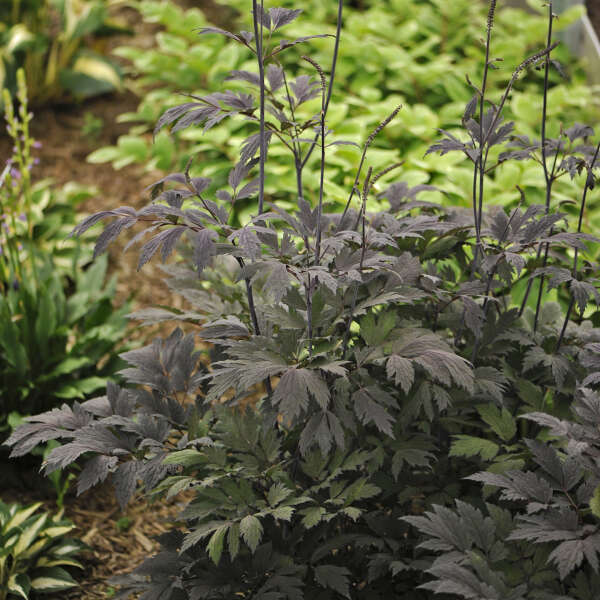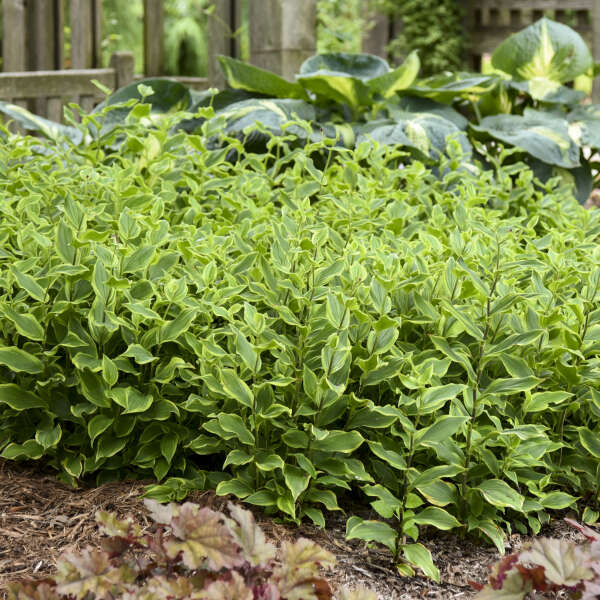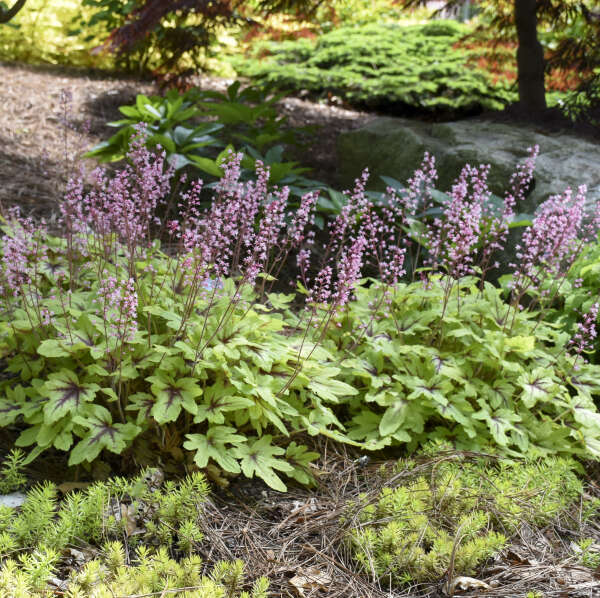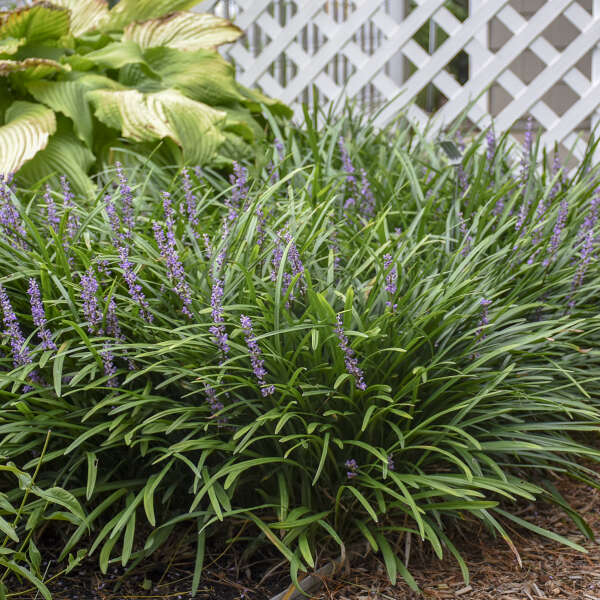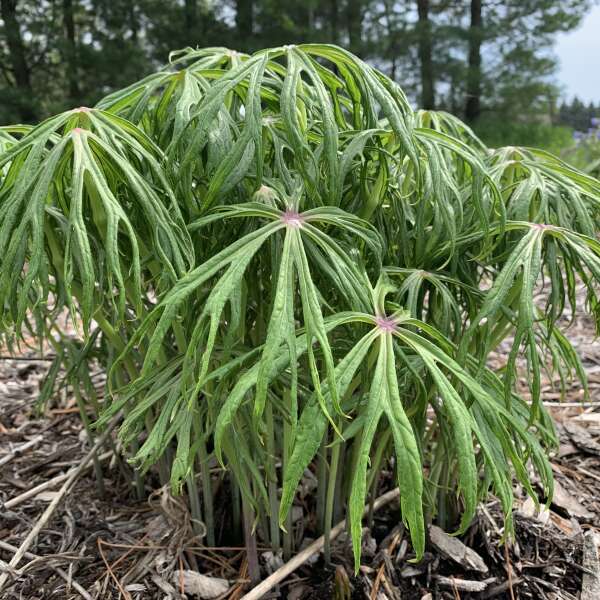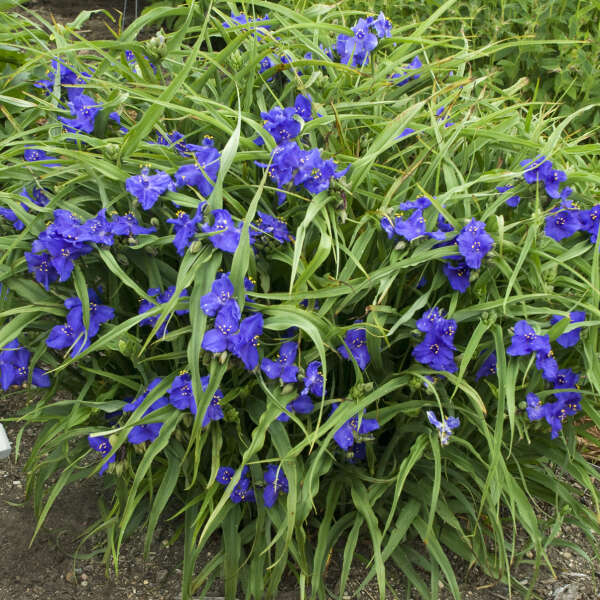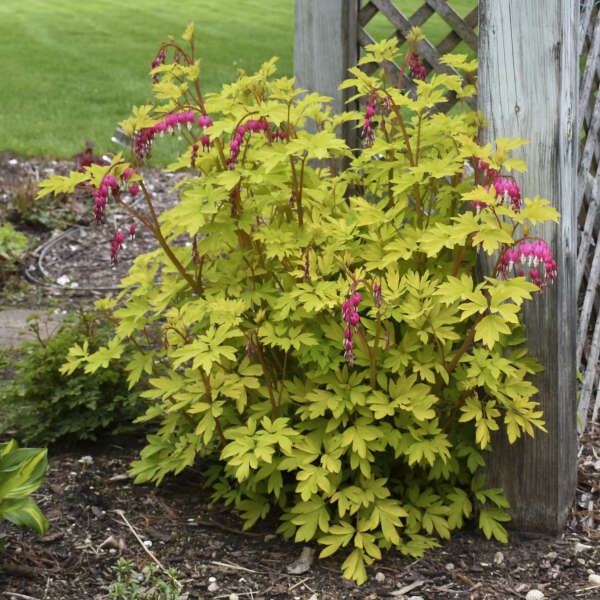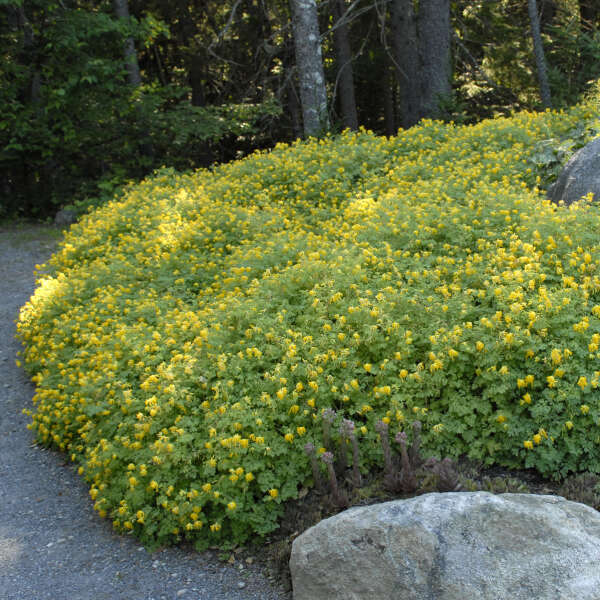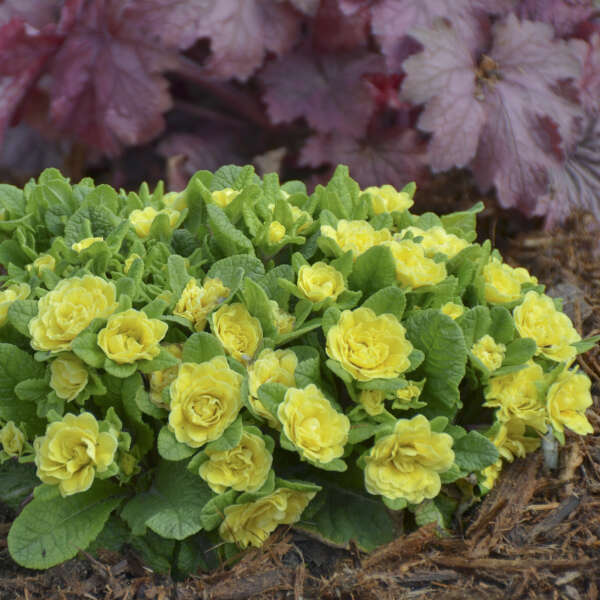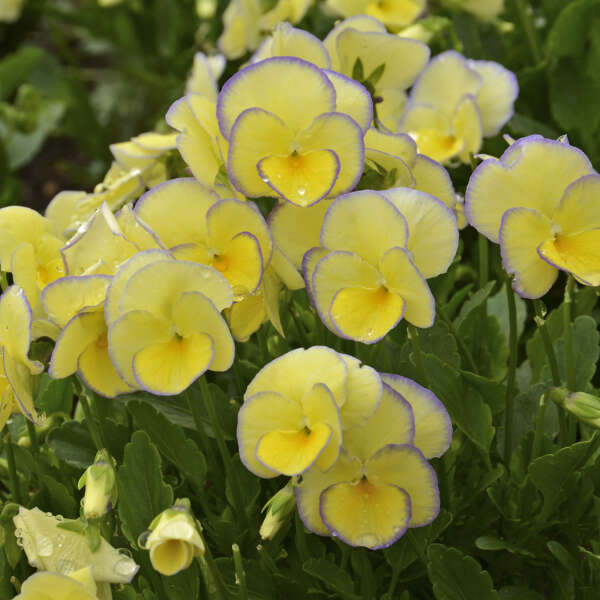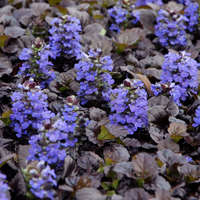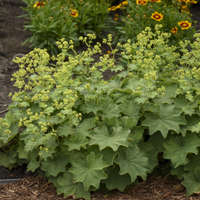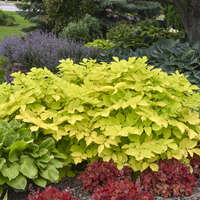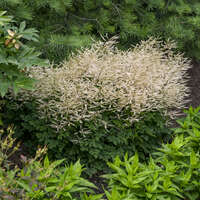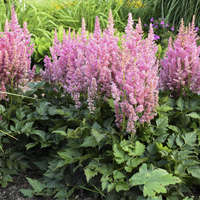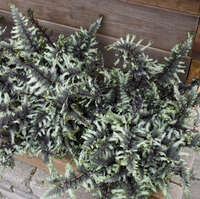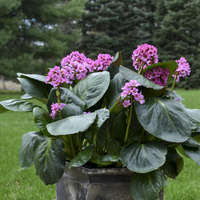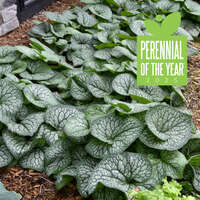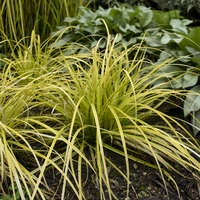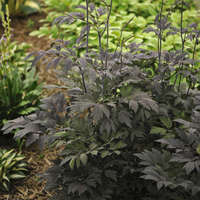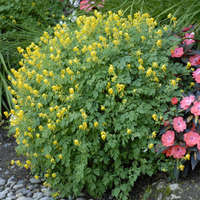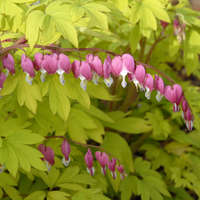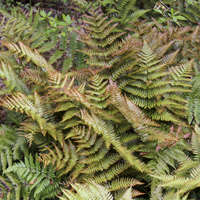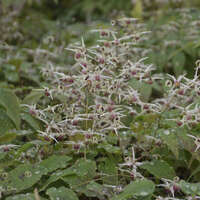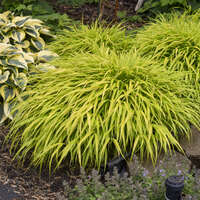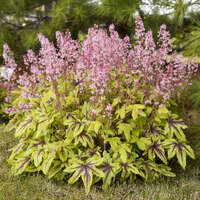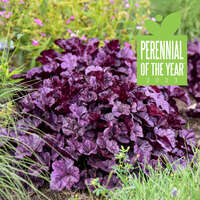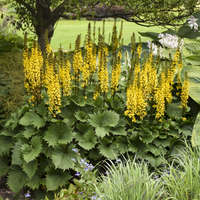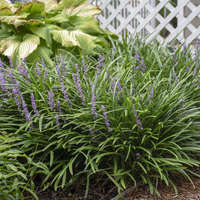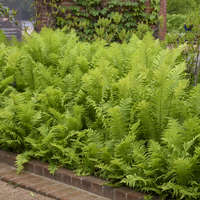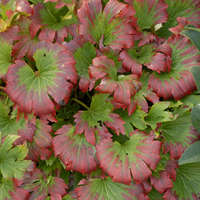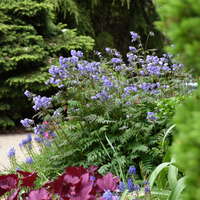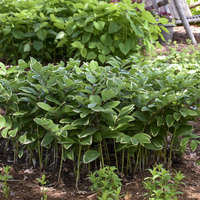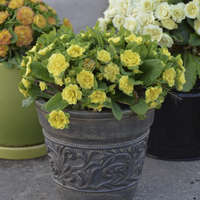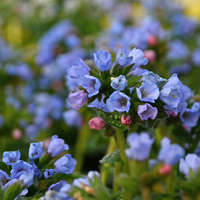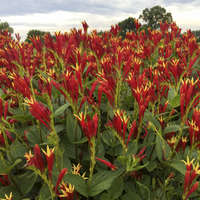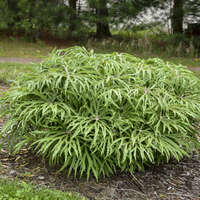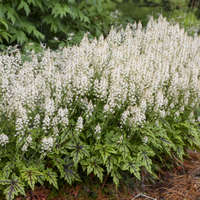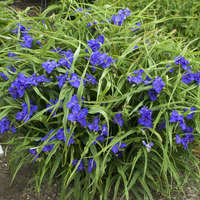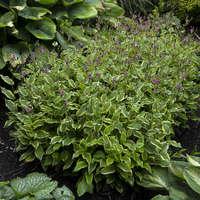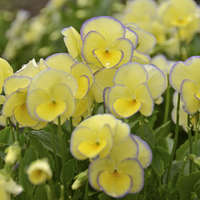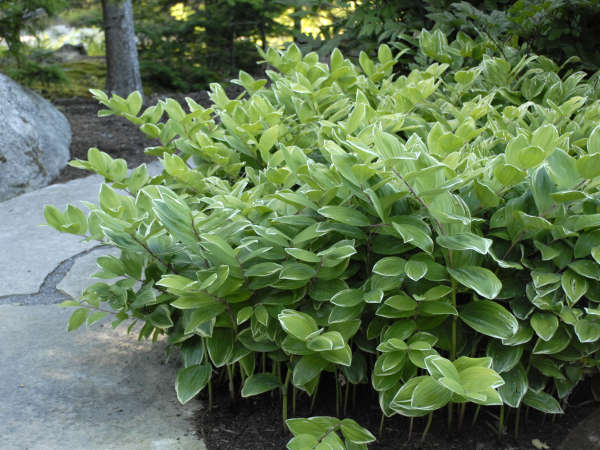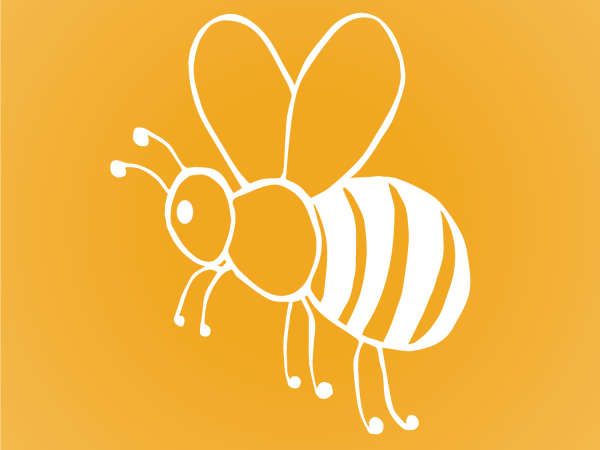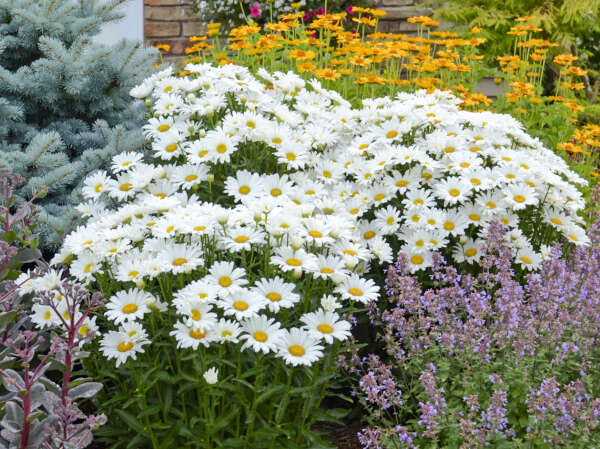Plants to Pair with Hostas
1 of 32
If you have a bit of shade in your garden, odds are you have a hosta or two in your garden as well. Year in and year out, Hostas remain one of the most popular perennials. They are a staple of every shade garden with thousands of cultivars available at garden centers. So if you already have Hostas in your garden the question becomes, what do you pair with it? Here are a few options.
2 of 32
Athyrium niponicum (Japanese Painted Fern)
Athyrium grows best in moist soil with a neutral to moderately acidic pH. Partial to full shade is best. To protect the crowns and tender shoots in the spring, it is best to leave the old fronds on the plant over the winter. They can be removed in the spring when the new fronds reach 6 inches tall. If division is necessary, do so in the spring.
Variety Pictured: Athyrium niponicum 'Crested Surf'
Height: 20-22" | Zones: 3-8 | Part to Full Shade
Learn More

3 of 32
Heuchera (Coral Bells)
Coral bells are easy to grow and blend easily with most other perennials in the landscape. Because of their low, mounding habit, they are often used as edging along paths or in containers.
Variety Pictured: Heuchera DOLCE® 'Wildberry'
Height: 10-14" | Zones: 4-9 | Full Sun to Full Shade
Learn More

4 of 32
Hakonechloa (Hakone Grass, Japanese Forest Grass)
Hakonechloa is grown mainly for its beautiful foliage, though it does produce seed heads. Tiny, inconspicuous reddish brown flower spiklets appear in airy clusters from late summer thru early fall.
Variety Pictured: Hakonechloa macra 'All Gold'
Height: 9-14" | Zones: 5-9 | Part to Full Shade
Learn More5 of 32
Pulmonaria (Lungwort)
Pulmonarias do best in a highly organic, moisture retentive soil. Dry conditions can lead to powdery mildew and leaf scorch. Clean up in the spring by removing old or damaged foliage from the previous year. Some of the older cultivars can open up in the center and thus it becomes necessary to prune them down to ground level for a new fresh flush of foliage. If plants decline or are affected by powdery mildew, prune them back to ground level as well.
Variety Pictured: Pulmonaria 'Twinkle Toes'
Height: 12-14" | Zones: 3-9 | Part to Full Shade
Learn More
6 of 32
Brunnera macrophylla (Heartleaf Brunnera)
Brunneras are classic perennials that are treasured for their shade tolerance and lovely blooms. They make a fantastic groundcover, though the variegated forms may be slower to spread than the species. Try growing them in containers too so they will be close at hand when you want to snip a few blooms for a spring bouquet.
Variety Pictured: Brunnera macrophylla 'Jack of Diamonds'
Height: 14-16" | Zones: 3-8 | Part to Full Sun
Learn More

7 of 32
Aralia cordata (Japanese Spikenard)
An excellent complement to hostas and woodland perennials, Aralia emerges mid-spring with bright gold leaves held on nicely contrasting reddish brown stems. If given at least a few hours of sun a day, the foliage will remain yellow all summer. In heavier shade, the foliage ranges from chartreuse to lime green.
Variety Pictured: Aralia cordata 'Sun King'
Height: 3' | Zones: 3-9 | Part to Full Shade
Learn More8 of 32
Carex (Sedge)
Sedges are not technically an ornamental grass, though they are often grouped together. They tend to take more water but also perform much better in the shade.
Variety Pictured: Carex oshimensis 'Everillo'
Height: 10-12" | Zones: 5-9 | Part Shade
Learn More9 of 32
Polemonium (Jacob's Ladder)
This easy-to-grow perennial looks great in the middle to front of the flower border. It easily mixes with most other garden plants. Though most Polemoniums prefer afternoon shade, 'Heaven Scent' seems to be able to take a bit more sun than the others as long as a good supply of moisture is available.
Variety Pictured: Polemonium 'Heaven Scent'
Height: 18-24" | Zones: 3-7 | Part Sun to Full Shade
Learn More
10 of 32
Spigelia (Indian Pinks)
Spigelia is a very versatile perennial-it grows naturally in either sun or shade. This perennial can be found growing in the wild in woodlands and along streambanks throughout the Eastern United States. It's wildly popular among wildflower enthusiasts and highly sought after.
Variety Pictured: Spigelia marilandica 'Little Redhead'
Height: 24-28" | Zones: 5b-9 | Full Sun to Full Shade
Learn More11 of 32
Epimedium (Barrenwort)
Epimedium are one of the few plants capable of surviving in dry shade. Although slow to establish, mature plants will not be missed in the landscape, particularly when in flower. These plants are appreciated for their durability and critter resistance, but loved for the long sprays of jester hat-like flowers in spring.
Variety Pictured: Epimedium 'Domino'
Height: 18-24" | Zones: 5-8 | Part to Full Shade
Learn More12 of 32
Ajuga (Bugleweed)
A. reptans is an evergreen groundcover that can grow in the shade of large trees where grass is hard to establish. Unlike many perennials that are grown only for their flowers, Ajuga is prized for its attractive, colorful foliage that looks nice all year.
Variety Pictured: Ajuga reptans 'Black Scallop'
Height: 3-6" | Zones: 4-10 | Full Sun to Full Shade
Learn More13 of 32
Polygonatum (Solomon's Seal)
Solomon's Seal is a natural plant for the shady woodland garden, even tolerating heavy shade. Deep, rich, moist soil is best. Solomon's Seal is sometimes slow to establish itself, but is very long-lived and easy to maintain once it does.
Variety Pictured: Polygonatum odoratum 'Variegatum'
Height: 18-24" | Zones: 3-9 | Part to Full Shade
Learn More14 of 32
Matteuccia (Ostrich Fern)
Ostrich ferns need plenty of space to grow since they are rapid spreaders. They spread by dense underground runners which extend out in all directions, quickly forming colonies.
Variety Pictured: Matteuccia struthiopteris
Height: 3-6' | Zones: 3-7 | Full Sun to Full Shade
Learn More15 of 32
Aruncus (Goat's Beard)
Though Aruncus tends to be a slow-grower the first couple of seasons, once it is established it puts on a fabulous show year after year. Make sure it has plenty of room to grow when you first plant it; transplanting this species is a very difficult task. This species is native to North America.
Variety Pictured: Aruncus 'Chantilly Lace'
Height: 24-32" | Zones: 3-7 | Full Sun to Full Shade
Learn More

16 of 32
Mukdenia (Red Leaf Mukdenia)
Looking for something different? This unique Heuchera relative native to China has large, green, fan-shaped leaves. Beginning in summer, red pigmentation begins to creep inward from the edges and by fall, they are fire red. The foliage forms a low, spreading mound.
Variety Pictured: Mukdenia rossii 'Karasuba'
Height: 8-12" | Zones: 4-9 | Part Shade
Learn More17 of 32
Ligularia
Ligularias are at their best when grown in cool, moist locations in part shade. Protection from the hot, afternoon sun in the south is essential to prevent wilting. They are a natural for the pond side where there is a constant supply of moisture, though they do require good drainage.
Variety Pictured: Ligularia 'Bottle Rocket'
Height: 28-34" | Zones: 4-9 | Part Shade
Learn More

18 of 32
Alchemilla mollis (Lady's Mantle)
A. mollis is a clump-forming perennial that spreads slowly by creeping rhizomes. It can be used as a groundcover, edging, or filler plant in the border. If it's happy where it's planted, this plant will reseed.
Variety Pictured: Alchemilla mollis
Height: 15-18" | Zones: 3-7 | Full Sun to Part Shade
Learn More19 of 32
Tiarella (Foamflower)
Tiarellas can be grown in containers and in the landscape anywhere that dappled to full shade can be provided. They pair beautifully with hostas and ferns. Tiarellas enjoy popularity thanks to their shade tolerance, unusual leaf shape, dramatically marked foliage, repeat flowering, and light fragrance.
Variety Pictured: Tiarella 'Cutting Edge'
Height: 8-10" | Zones: 4-9 | Part to Full Shade
Learn More

20 of 32
Dryopteris erythrosora (Autumn Fern)
This fern is particularly nice when grown in woodland or Japanese gardens. In mild areas or with suitable protection, the Autumn Fern is evergreen.
Variety Pictured: Dryopteris erythrosora 'Brilliance'
Height: 2' | Zones: 5-9 | Part to Full Shade
Learn More21 of 32
Astilbe
Astilbes are long-lived perennials that are most comfortable when grown in rich soil and light shade to filtered sun. They will grow in full shade, but will not bloom as prolifically there.
Variety Pictured: Astilbe chinensis 'Little Vision in Pink'
Height: 14-16" | Zones: 4-9 | Full Sun to Full Shade
Learn More22 of 32
Bergenia (Pigsqueak)
Bergenia thrives in almost any amount of sunlight, but partial shade is ideal. In northern regions, it will grow in full sun, but it needs afternoon shade in the south. In either region, plants will always perform the best in rich, moisture-retentive soil. However, it dislikes heavy soils and standing water.
Variety Pictured: Bergenia 'Miss Piggy'
Height: 16-18" | Zones: 4-9 | Full Sun to Full Shade
Learn More

23 of 32
Cimicifuga (Snakeroot)
Native to the edges of woodlands in eastern North America, Cimicifuga performs best in partial shade and moist, organically enriched soil. Some direct sunlight is required to draw out the purple coloration in the foliage. Water supply should remain constant throughout the spring, summer and autumn. Cimicifuga takes a few years to get established and reach maturity. Mature clumps should not be disturbed.
Variety Pictured: Cimicifuga 'Chocoholic'
Height: 4-5' | Zones: 4-8 | Part to Full Shade
Learn More24 of 32
Tricyrtis (Toad Lily)
Tricrytis performs best in humus-rich, evenly moist soil in partial to full shade. It is very long-lived and easy to grow. It tends to be a late-riser, so don't worry if you don't see this plant coming up with other perennials in early spring. Your patience will be greatly rewarded. This species spreads to form wide clumps. Division is recommended every 3-4 years in spring to maintain vigor.
Variety Pictured: Tricyrtis formosa 'Autumn Glow'
Height: 24-26" | Zones: 4b-9 | Part to Full Shade
Learn More25 of 32
Heucherella FUN AND GAMES® 'Eye Spy'
Heucherella is a hybrid genus produced from a cross between Heuchera and Tiarella. From Heuchera they gain the many different foliage colors and textures, while Tiarella add deeper leaf lobes and serration, as well as their signature central leaf blotching. Heucherella are sterile hybrids, and so typically have longer bloom seasons than either of their parents.
Variety Pictured: Heucherella FUN AND GAMES® 'Eye Spy'
Height: 8-10" | Zones: 4-9 | Part Sun to Full Shade
Learn More

26 of 32
Liriope (Lily-turf)
A grass-like plant that blooms! Lirope is a unique, evergreen grassy perennial with wide, dark green, strappy leaves and a fountain-like habit. Delightful, lilac-purple flowers resembling grape hyacinths are displayed above the foliage in late summer.
Variety Pictured: Liriope muscari 'Big Blue'
Height: 12-18" | Zones: 5-10 | Full Sun to Full Shade
Learn More27 of 32
Syneilesis aconitifolia (Shredded Umbrella Plant)
A beautifully fine-textured plant that's perfect for foliage interest. The common name is incredibly descriptive of the leaves-narrow, dissected leaves cascade downward like an umbrella. Emerging foliage is covered with a unique white fur. White flowers on mauve pink calyxes tower above the foliage in midsummer.
Variety Pictured: Syneilesis aconitifolia
Height: 16-20" | Zones: 3b-8 | Full Sun to Full Shade
Learn More28 of 32
Tradescantia (Spiderwort)
Tradescantia is adaptable to many types of soil as long as it is moist and well-drained. It will grow in any amount of sunlight, from full sun to full shade. In full sun, plants must be kept moist to prevent scorching. Plants will have nicer foliage, though perhaps fewer flowers, in partial to full shade. After flowering declines, cut plants all the way back. This will encourage new growth and a second round of bloom.
Variety Pictured: Tradescantia 'Zwanenburg Blue'
Height: 18-24" | Zones: 3-9 | Full Sun to Full Shade
Learn More29 of 32
Dicentra spectabilis (Old Fashioned Bleeding Heart)
After putting on this fantastic display, Old-Fashioned Bleeding Hearts usually go dormant until the following spring. However, if plants are kept well-watered during the spring, dormancy may be delayed until late summer or early fall.
Variety Pictured: Dicentra spectabilis 'Gold Heart'
Height: 18-24" | Zones: 3-9 | Part to Full Shade
Learn More30 of 32
Corydalis lutea (Yellow Corydalis)
Beginning in late spring, clusters of light yellow to rich gold flowers, somewhat like those of the fringed bleeding heart, hover just above the foliage. Though blooming is heaviest in late spring, C. lutea will continue to produce flowers thru mid-fall if plants are kept moist. Use this plant in cottage gardens, shaded rock gardens, or in containers. Reseeds prolifically.
Variety Pictured: Corydalis lutea
Height: 9-15" | Zones: 5-7 | Full Sun to Part Shade
Learn More31 of 32
Primula (Primrose)
Primroses will produce dazzling flowers each spring if they are well-maintained. Ideally, they should be planted in boggy areas, perhaps near bodies of water, where their shallow roots will not dry out. Plants will go dormant in hot, dry summer weather unless they are kept well-watered. Though they are fully hardy in the North, primroses need protective insulation such as snow cover in the late winter months so they are not lost to late hard freezes.
Variety Pictured: Primula vulgaris BELARINA® Buttercup
Height: 5-8" | Zones: 4-8 | Part to Full Shade
Learn More32 of 32
Viola (Violet)
Violas grow best in cool, moist, shady environments. In the north, plants can tolerate full sun but prefer partial to full shade. Shade from deciduous trees is ideal because the plants growing below receive full sun in the spring, followed by protection from the harsh summer sun once the trees get their leaves. In the south, violas should be grown in partial to full shade and mulched to help the soil stay cool and moist.
Variety Pictured: Viola 'Etain'
Height: 6-8" | Zones: 5b-9 | Full Sun to Full Shade
Learn More